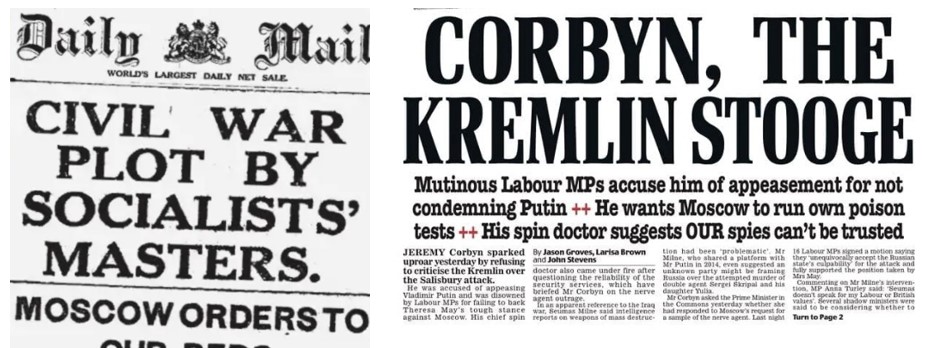By Mark Langabeer, Hastings and Rye Labour member
The first Labour Government was elected in January 1924 and subsequently fell in the general election nine months later, on October 29. It had been a minority Government, relying on Liberal support, with Ramsey McDonald, Labour leader, as both Prime Minister and Foreign Secretary.
At that time, the likes of Winston Churchill regarded Labour as a thoroughly ‘dangerous’ party, and official Labour historians like to suggest that McDonald’s government showed the ability of Labour to run affairs of state, despite being the party of the trade unions and the working class. The ‘respectability’ of that government, however, was based on the outlook of a leadership which never strayed beyond the horizons of capitalism. The reliance of the government on Liberal support was a convenient shield from the pressure for reform that came from the working class below.
A few reforms were nonetheless introduced, and some of these even lasted a while. The ‘Wheatley Housing Act’, for example, laid the basis for what became a programme of council house building. Within ten years, half a million council houses had been built by local authorities, with controlled rents, but after 1933, the then National Government cut the subsidies to local councils.
There were also improvements made by the 1924 government to pensions and unemployment benefits. GDH Cole, a major labour movement historian, noted that its main achievement was the ending of the Geddes Axe. Geddes had presented a report that argued for cuts in public spending and reducing taxation, after the UK had racked up debts which Geddes wanted to cut.
Labour also officially recognised the Bolshevik-led Government of the USSR for the first time. At the time, there was widespread sympathy with the aims of the Bolsheviks within rank and file of the labour movement, and this move was a fairly easy gesture to mollify them.
Piecemeal reform the policy of Labour leaders
Still, recognising the dreaded Bolsheviks terrified the establishment, and it provoked a storm of protest in the Tory press. In reality, the British capitalists had little to fear from the likes of McDonald, Snowdon and Henderson, who were wedded to the idea of piecemeal reform and were hostile to any idea of revolutionary change.
In fact, if anything, the experience of that first Labour Government demonstrated that such leaders were useful tools for preserving the status quo in difficult times. Basing their policies on the dictates of capitalism, these leaders showed workers the ‘failures’ of socialism, and it was the first time (but far from the last) that Labour leaders played the role of a safe ‘second eleven’ to the Tories, in times of political and economic crisis.

Once in office, but safely monitored and controlled by the instruments of the capitalist class – the monarchy, the press, the civil service, etc, – the Labour ‘second eleven’ can take the blame for the problems caused by capitalism and thereby ensure that the so-called, ‘natural party’ of Government, the Tories, can return to office.
In October 1924, following the withdrawal of Liberal support, McDonald was forced to call a general election and the Tories launched a red scare campaign. Four days before the election, the Daily Mail ran a headline about a letter purportedly from Gregori Zinoviev, the leader of the Communist International, to the Communist Party in Britain.
The letter was supposedly a ‘directive’ to British communists, ordering them to engage in seditious activities, using the pretext of the new situation created by the British government having recognised the USSR. It suggested that a Labour government would radicalise the working class and put the communists in a good position to carry out a Bolshevik-style revolution.
It is well-established today, of course, that the infamous ‘Zinoviev Letter’ was a deliberate forgery used to cause Labour to lose the election, which it duly did, and the Tories resumed office with a majority. However, although Labour lost many parliamentary seats, it acually increased its number and percentage of votes, an indication that many of its supporters were more impressed by Labour’s reforms, however modest they might have been, than by the rantings of the Daily Mail. Moreover, Labour had now replaced the Liberals as the main political opposition to the Tories.
Shift in power in the interests of workers
What conclusions can we draw from Labour’s first Government, and for that matter, subsequent Labour governments? It is that a government basing itself on the rules and limitations of the capitalist system will always end up working in the interests of the ruling class. The only alternative – which was nowhere on offer from Ramsay McDonald, is a socialist programme that ensures a shift in power and wealth in favour of the working class.
If Labour fails to take immediate steps to bring the banks, insurance companies and large corporations into public ownership so that society can be run for people’s needs, rather than private profit, then those same giant economic interests will dictate to Labour. Socialists will support any reforms that serve the interests of the working class – and that includes any that Starmer/Reeves might introduce – but reforms will always be short-lived and under permanent threat of reversal under this current economic system.
[Top picture, showing the Labour cabinet of 1924 (and not a woman in sight) is from Wikimedia Commons, here.]



